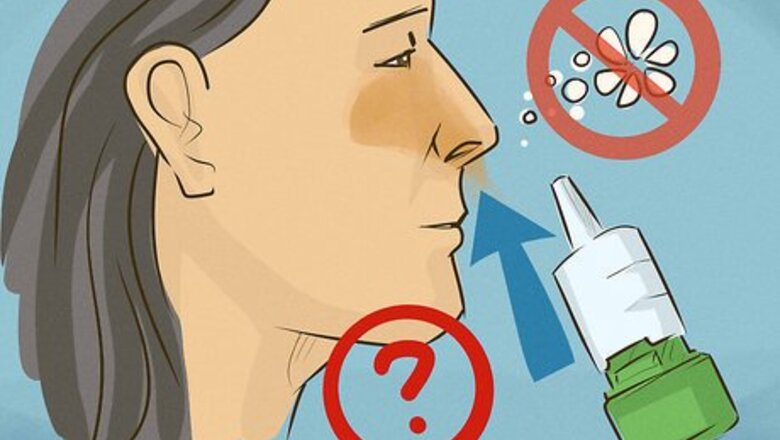
views
Preparing to Use Flonase
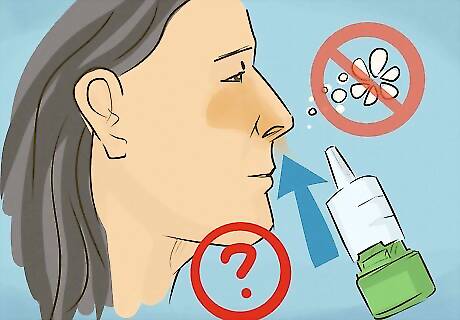
Learn how Flonase works. It's a corticosteroid that stops your body from releasing the chemicals that cause allergies. It is specific to symptoms caused by allergies, and will not relieve similar symptoms with other causes. For example, it will stop a runny nose from allergies, but not from a cold. In the past, doctors prescribed it if you had constant allergy symptoms that don't respond to over the counter (OTC) medications. Recently, though, Flonase was approved for over the counter use, and may be available at your pharmacy. Intranasal steroids (INS) like Flonase act on many inflammatory substances and help block the body from producing them while antihistamines block only the histamine release.
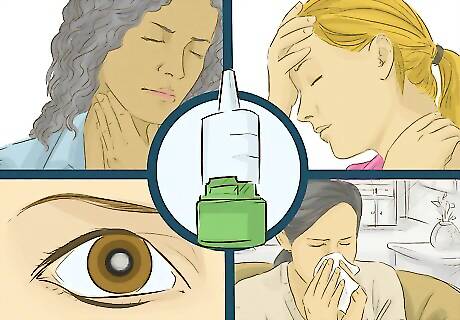
Be aware of the side effects. There are two types of side effects for this medication. Because it is administered as a nasal spray, you may experience nosebleeds, headaches, sneezing, and dry or irritated nose and throat. Because it is a corticosteroid, you may experience upper respiratory infections, cataracts or glaucoma, and slower growth rate in children who use it for a prolonged time period. Less common side effects also include diarrhea and abdominal pain. Nosebleeds are the most common side effect from using Flonase. If you experience other side effects from the medication, such as cough, fever, headache or muscle aches, sore throat, or fatigue, see your doctor.

Go over your other medications with your doctor or pharmacist. Provide her with a complete list of other prescription and OTC medications you're taking. Include any vitamins, nutritional supplements, and herbal products you take or have recently taken. Physicians and pharmacists can review medication lists to ensure no interactions occur between medication that are taken.Some drugs (HIV drugs and antifungals, for example) may interact negatively with Flonase, so you and your doctor will need to come up with a plan to manage interactions or alter treatment. It may be as simple as changing your dosage and monitoring for side effects.

Give the doctor your medical history. Flonase may also cause unwanted side effects if you have or previously had certain medical conditions. If you have a compromised immune system, use of a corticosteroid could lower the body's ability to fight infection. Provide the doctor with a detailed medical history. Make sure to note any of the following conditions known to interact poorly with Flonase: Cataracts (clouding in the lens of your eye) Glaucoma (an eye fluid-pressure disease) Current nose sores Any type of untreated infection Herpes infection in the eye Recent nose surgery or injury Previous diagnosis of tuberculosis (a type of infection) in your lungs Pregnancy, breastfeeding, or plan to become pregnant. If you become pregnant while using fluticasone, call your doctor immediately.
Using Flonase Properly

Use Flonase as directed. Proper usage is important to minimize side effects. Read the instructions on the packaging and follow the dosing schedule, or follow your doctor or pharmacist's instructions precisely. Ask questions about anything you may not understand to ensure you're using the drug properly. Do not use Flonase any more or less in either amount or frequency than your doctor has prescribed.
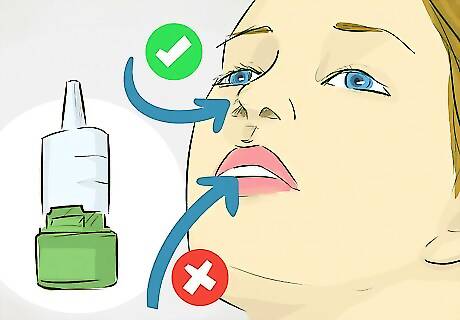
Do not swallow Flonase. Because the nose and throat are closely related, nasal sprays can sometimes drip into the back of your mouth or throat. Flonase is not meant to be swallowed, though, and this may cause unwanted side effects. Instead of swallowing, spit it out into the sink and rinse your mouth out. Also be careful not to get it in your eyes or mouth. Rinse thoroughly if you do.
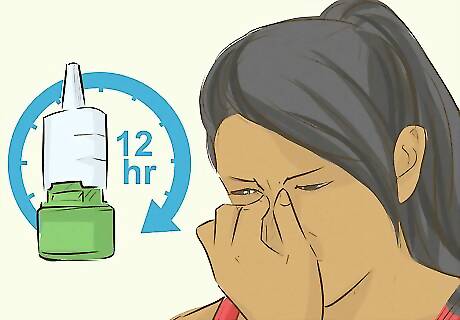
Be patient. Don't expect it to immediately cure all of your symptoms. Your symptoms may lessen the after the first 12 hours but it will take at least several days to see the full benefit. Allow a few days for Flonase to work, and use it regularly on the prescribed schedule. It's important to continue using fluticasone even when you feel well, or symptoms may return. Don't stop using it without first talking to your doctor. After a period of time, he may recommend decreasing your dosage.
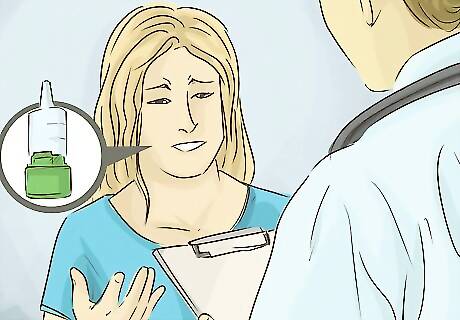
Report side effects immediately. Reporting side effects immediately helps your doctor get a sense of how to adjust your treatment. Be especially alert if you've overused it or if you develop sensitivity. Common side effects include headache, dryness or burning of the nasal passage, nosebleed, dizziness, upper respiratory infections, nausea and vomiting. If any of these side effects are severe, contact your doctor right away. However, if you experience any of the following severe side effects, stop using the drug and contact your doctor: Swelling of face, neck, feet, or ankles Difficulty breathing or swallowing Wheezing breaths Fatigue Hives Fever Unexpected bruising.
Using the Correct Administration Technique
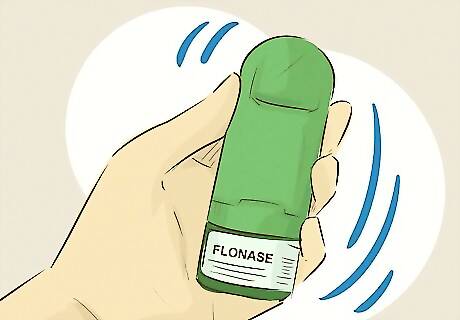
Shake the pump-bottle gently. Do this before removing the sprayer's dust cover to prevent accidental spraying. You do this for the same reason you may shake a juice before drinking it. Liquid mixtures sometimes separate a bit, and shaking ensures an even distribution of ingredients. This is especially important with medication. Remove the sprayer's dust cover after shaking the bottle.

Prime the pump if necessary. To use it for the first time or after not having used it for a week or more, you must prime the Flonase bottle. Hold the pump applicator vertically between your forefinger and middle finger. The bottom of the bottle should be supported by your thumb. Point the spray nozzle away from your face and body. The very first time you use a new bottle, press down on the pump six times to let off pressure. To re-prime a bottle you've used before, press down and release the pump until you see a fine spray.
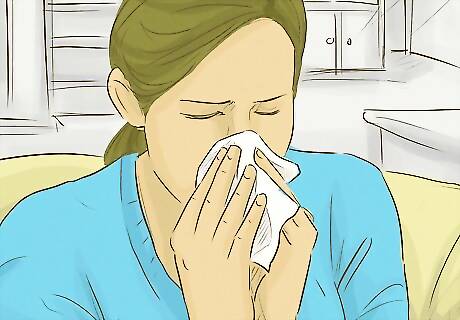
Blow your nose. Before using the nasal spray, you need to clear your nasal passages. Otherwise, the medication might get caught in the front of the nostril, where it will be less effective. Blow your nose until you have completely cleared your nostrils. Do not blow your nose after using the spray.
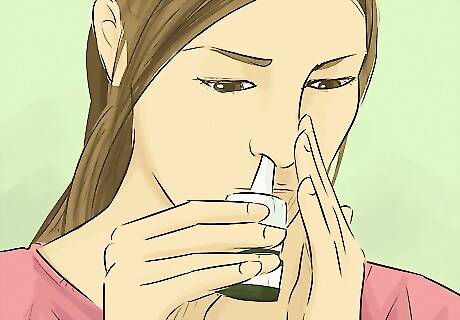
Position the applicator in the nostril. Lean your head slightly forward and carefully place the nasal applicator into one nostril. Be sure to keep the bottle upright, and hold the other nostril closed with a finger. You should be holding the pump with the applicator between your forefinger and middle finger, and the bottom supported by your thumb.
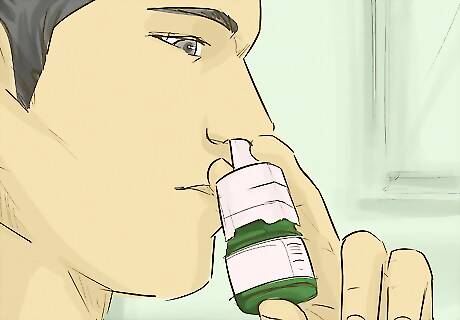
Administer the drug. Breathe in through your nose while pressing the pump to spray the drug into your nostril. Take a normal breath in through that nostril, but breathe out through your mouth. This prevents you from blowing the medication back out through your nose. Repeat the steps in the other nostril.
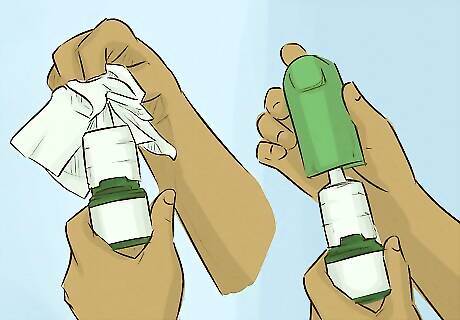
Keep the applicator clean. Improper hygiene can increase the chances of infection with repeated usage. Every time you finish using the applicator, wipe it with a clean tissue and replace the dust cover. At least once a week, you should clean your nasal spray applicator with warm water. Remove the cap, then pull on the applicator (tip) to remove it. Wash the cap and applicator in warm water. Dry them at room temperature, and then put them back on the bottle.
Taking Precautions While Using Flonase

Report illness immediately. Since Flonase is a corticosteroid and may decrease your body’s ability to fight infections, you need to take extra precautions while using it. If you get sick, let your doctor know immediately. You should always give healthcare providers a complete list of medications you're taking. Remember to include fluticasone inhalation/spray on your list.
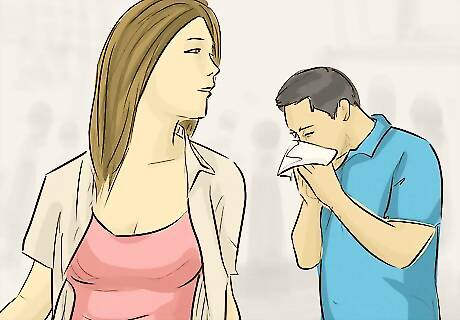
Avoid infectious germs and diseases. Stay away from people who are sick and wash your hands often. Be especially careful to stay away from people who have chickenpox or measles. Tell your doctor right away if you find out that you have been around someone who has one of these viruses.

Report Flonase use before surgeries or emergency treatment. In rare cases, prolonged use of corticosteroids decreases your body's ability to respond to physical stress. As such, it's very important that your doctors know you're using Flonase before you undergo any surgery (including dental surgery) or emergency treatment.















Comments
0 comment